CAA News Today
CAA Announces the Opening of 2018 Terra Foundation and 2017 Wyeth Foundation Publications Grants
posted by CAA — May 15, 2017
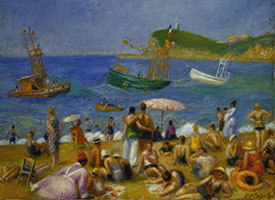
Image credit: William Glackens, “Beach, St. Jean de Luz.” 1929, oil on canvas, Terra Foundation for American Art, Daniel J. Terra Collection, 1988.8
CAA welcomes applications and letters of intent for the 2018 Terra Foundation for American Art International Publication Grant and the 2017 Wyeth Foundation for American Art Publication Grant.
The Terra Foundation grant provides financial support for the publication of book-length scholarly manuscripts in the history of American art circa 1500–1980. The grant considers submissions covering what is the current-day geographic United States.
The deadline for letters of intent is September 15, 2017.
Awards of up to $15,000 will be made in three distinct categories:
- Grants to US publishers for manuscripts considering American art in an international context
- Grants to non-US publishers for manuscripts on topics in American art
- Grants for the translation of books on topics in American art to or from English.
The Wyeth Foundation for American Art Publication Grant supports the publication of books on American art through the Wyeth Foundation for American Art Publication Grant, administered by CAA.
The deadline for submissions is September 15, 2017.
For this grant program, “American art” is defined as art created in the United States, Canada, and Mexico. Eligible for the grant are book-length scholarly manuscripts in the history of American art, visual studies, and related subjects that have been accepted by a publisher on their merits but cannot be published in the most desirable form without a subsidy. The deadline for the receipt of applications is September 15 of each year.
Art Journal: Winter 2016 Issue
posted by CAA — December 26, 2016
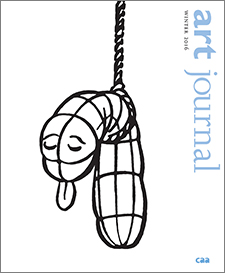 Rolando del Fico, last seen in 1970s Italian gay underground comics, is resurrected in the Winter 2016 issue of Art Journal. A project by the Catalan artist Francesc Ruiz revives the irrepressible character, picaresque hero of myriad amorous adventures, in a visual tribute replete with Rolando’s thought-bubble iconography of salamis and cherubs in various states of excitement.
Rolando del Fico, last seen in 1970s Italian gay underground comics, is resurrected in the Winter 2016 issue of Art Journal. A project by the Catalan artist Francesc Ruiz revives the irrepressible character, picaresque hero of myriad amorous adventures, in a visual tribute replete with Rolando’s thought-bubble iconography of salamis and cherubs in various states of excitement.
Other features in the issue explore little-examined aspects of more familiar bodies of work. Amy DaPonte analyzes the portraits of Turkish immigrants central to the early work of the German photographer Claudia Höfer. Liz Linden investigates the overlooked presence of the textual in the works Douglas Crimp gathered in 1977 for the watershed exhibition Pictures.
In the Reviews section, Lauren Richman reviews two exhibitions of work by the midcentury American photographer Lee Miller, along with their catalogues. The artist Liam Gillick considers a book by Dave Beech that grapples with the relation between art and capitalism in the contemporary neoliberal moment. Christa Noel Robbins assesses David J. Getsy’s book that sees the sculpture of the 1960s through the lens of transgender and “transformable” bodies. Finally, Kent Minturn reviews Pierre Leguillon’s book on the experimental typography of Jean Dubuffet—a significant compendium of the work that is also a work of art history.
CAA sends print copies of Art Journal to all institutional members and to those individuals who choose to receive the journal as a benefit of membership. The digital version at Taylor & Francis Online is currently available to all CAA individual members regardless of their print subscription choice.
In the December 2016 Art Bulletin
posted by CAA — December 22, 2016
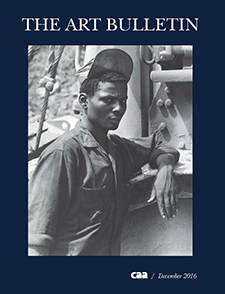 A young Ghanaian man photographed by Paul Strand in 1963 peers intently from the cover of the December 2016 issue of The Art Bulletin. Mark Crinson’s essay analyzes the American photographer’s book Ghana as a conflicted attempt to represent postcolonial nationhood.
A young Ghanaian man photographed by Paul Strand in 1963 peers intently from the cover of the December 2016 issue of The Art Bulletin. Mark Crinson’s essay analyzes the American photographer’s book Ghana as a conflicted attempt to represent postcolonial nationhood.
In other essays featured in the issue, Michalis Olympios reassesses the Renaissance art of Venetian Crete in light of local Gothic traditions and adaptations of northern European models; Susannah Rutherglen defines a genre of Venetian Renaissance painting that treats interior doors and shutters as sites of artistic innovation; Ruth S. Noyes finds that Mattheus Greuter’s engravings for Galileo’s controversial publication on sunspots argue a case too provocative to articulate in the text; and Harper Montgomery surveys the work of the Guatemalan artist and critic Carlos Mérida, a cosmopolitan who worked in the 1920s to incorporate indigenous Maya culture into the transnational production and display of modern art.
The reviews section, on the theme of “Subjects Framed and Reframed,” takes aim at early photography. It includes reviews of recent books on Eadweard Muybridge’s nudes, photographs of the abolitionist Sojourner Truth, a European commercial photographer in 1870s Yokohama, and portrait photography in the Arab world of the late nineteenth century.
CAA sends print copies of The Art Bulletin to all institutional members and to those individuals who choose to receive the journal as a benefit of membership. The digital version at Taylor & Francis Online is currently available to all CAA individual members regardless of their print subscription choice.
An Interview with Mary Miller, CAA 2017 Convocation Speaker
posted by Christopher Howard — December 06, 2016
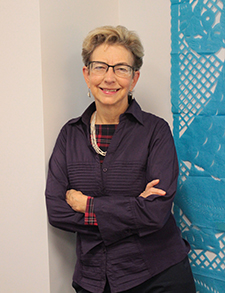
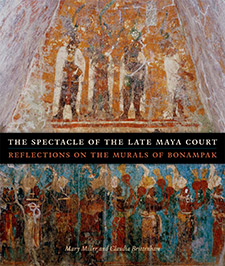
Mary Miller, Sterling Professor of History of Art at Yale University in New Haven, Connecticut, will deliver the keynote address during Convocation at the 2017 Annual Conference, to be held at the New York Hilton Midtown in Manhattan. Free and open to the public, Convocation takes place on Wednesday, February 15, 5:30–7:00 PM. The event will include the presentation of the annual Awards for Distinction and be followed by the conference’s Opening Reception.
Miller earned an AB in 1975 at Princeton University in Princeton, New Jersey. Six years later she completed her PhD at Yale, joined the faculty there, and has remained at the school ever since. Miller was recently appointed as senior director of the Institute for the Preservation of Cultural Heritage at Yale. She also served as dean of Yale College from 2008 to 2014 and has taken many other professorial and administrative roles over the years.
Miller is the author of The Murals of Bonampak (1986), The Art of Mesoamerica: From Olmec to Aztec (1986), and Maya Art and Architecture (1999). A frequent collaborator, she wrote The Gods and Symbols of Ancient Mexico and the Maya (1993) with Karl Taube and edited A Pre-Columbian World (2006) with Jeffrey Quilter and The Aztec Calendar Stone (2010) with Khristaan D. Villela. In recent years Miller edited Painting a Map of Sixteenth-Century Mexico City (2012), a study of a rare indigenous map in Yale’s Beinecke Library, with Barbara Mundy and completed The Spectacle of the Late Maya Court: Reflections on the Murals of Bonampak (2013) with Claudia Brittenham.
Miller has written essays for both of CAA’s scholarly print publications. In “A Re-examination of the Mesoamerican Chacmool,” published in The Art Bulletin in 1985, Miller proposed Maya sources for “the form, location, variety, and iconography” of the chacmool, the Mesoamerican stone sculptures of reclining male figures associated with war and sacrifice; previous scholarship had assumed they were of Central American origin and introduced to the Maya during the Toltec era.[1] In “Shaped Time,” published in Art Journal in 2009, Miller considered George Kubler’s 1962 landmark study The Shape of Time, “so rich in its textured treatment of the ways that streams of history and art-making intersect.”[2] She drew on her deep knowledge of ancient Mesoamerica to contextualize the book in relation to both Kubler’s research and other postwar scholarship in the field.
In 1988 Miller and Linda Schele accepted CAA’s Alfred H. Barr Award for museum scholarship for The Blood of Kings: Dynasty and Ritual in Maya Art (1986). The book, with photographs by Justin Kerr, was the catalogue for a traveling exhibition organized by Schele and Miller for the Kimbell Art Museum in Fort Worth, Texas.
Among Miller’s many accolades are a John Simon Guggenheim Memorial Fellowship and membership in the American Academy of Arts and Sciences. In 2010 she gave the fifty-ninth A. W. Mellon Lectures in the Fine Arts at the National Gallery of Art in Washington, DC—one of the highest honors in American art history.
CAA communicated with Miller via email last month. Here’s what she had to say.
How has teaching art history changed over the last twenty years?
Well, that takes us back to 1996, and just about then I volunteered to be the departmental pioneer (or guinea pig, take your pick) for digital images. I had to wrestle with the visual resources department to be allowed to build my own PowerPoints in that first iteration! And before I knew it, the slide cabinets had departed for remote storage. But that is the technical change. There are other changes that come along, especially in terms of what it is students bring to the class, and how the visual image is beginning to be the center for most of them.
What were the most important lessons you learned while serving as a dean?
You don’t want to know most of them! But, seriously, I gave a lot of thought to grading while dean. I also paid attention to learning outcomes, especially the importance of short assignments and detailed feedback early in the term. And I committed to developing opportunities for public speaking for students in class—a critical part of education but rarely intentionally instructed these days.
What does your current research concern?
My current research is focused on the gold disks of the Sacred Cenote at Chichén Itzá. The only serious study of the full set of them was published in 1952, although everyone knows them. Or thinks they know them. They’ve turned out to be even more fascinating than I though they’d be: the material—gold—was entirely new to the Maya of the ninth century, the technique of executing imagery on it entirely new as well. And then the imagery itself quite distinct. All but one of the disks were burned, ripped into pieces, crumpled, stomped upon, and then hurled into the Cenote (and the “one” is distinct only in not having been torn apart). There is meaning embedded in that dramatic ending! But three other projects have been developing along the edges. I keep all the files and notes for one of them—a history of the dealers, collectors, and materials that are critical to the formation of pre-Hispanic art as a field in the United States, 1940 onward—in a folder I call “The Rabbit Hole,” which tells you it is a wild and winding journey.
What was your first CAA Annual Conference experience like?
Oh, gosh. I think I was the driver of a group of Yale graduate students to DC [in 1979] and I am almost certain that George Shackelford was in the car. I’d had the bad fortune to have my wallet relieved of folding bills while I snoozed in the Yale Art and Architecture Library, so I scrounged together $40 to make the trip. I slept in the basement of a house some of my college friends shared near the Washington Cathedral, and then I hiked down Mass Ave to the Hilton—a good distance, I can assure you. I attended a session chaired by Joel Snyder that thrilled me. I watched a grad-school colleague give a presentation on African time, among other talks, and I had a lot of fun.
What are two or three pressing issues that both artists and academics share?
We all share the problem of the Google search: no matter what I am looking for, once I start searching for images, by page three the algorithm is offering me pictures of Van Gogh’s Sunflowers. If I am looking for a work of art, then surely I must want Sunflowers!
Seriously, I think the most pressing issue we share is that of conservation and preservation. How can the past—or the present—be preserved for the future?
Can you give us a teaser of what you will discuss at Convocation?
Well, last year I gave a talk at the Clark Art Institute in which I said art history can play a different role in twenty-first-century humanities than it did in twentieth-century humanities. I’ve developed these ideas more fully—and I hope I have some interesting things to say to the community of art historians, and the community of artists!
Notes
[1] See Mary Ellen Miller, “A Re-examination of the Mesoamerican Chacmool,” The Art Bulletin 67, no. 1 (March 1985): 7–17.
[2] See Mary Miller, “Shaped Time,” Art Journal 68, no. 4 (Winter 2009): 71–77.
2016 Wyeth Foundation for American Art Publication Grant Winners
posted by Christopher Howard — November 29, 2016
CAA is pleased to announce eight recipients of the annual Wyeth Foundation for American Art Publication Grant for 2016. Thanks to a generous grant from the Wyeth Foundation, these awards are given annually to publishers to support the publication of one or more book-length scholarly manuscripts in the history of American art, visual studies, and related subjects. For this grant program, “American art” is defined as art created in the United States, Canada, and Mexico.
The eight grantees for 2016 are:
- Ella Diaz, Flying under the Radar with the Royal Chicano Air Force: Mapping a Chicano/a Art History, University of Texas Press
- Jason Hill, Artist as Reporter: Weegee, Ad Reinhardt, and the PM News Picture, University of California Press
- Wadsworth Jarrell, AfriCOBRA: Experimental Art toward a School of Thought, Duke University Press
- Kellie Jones, South of Pico: African American Artists in Los Angeles in the 1960s and 1970s, Duke University Press
- Jennifer Josten, Mathias Goeritz: Modernist Art and Architecture in Cold War Mexico, Yale University Press
- Lauren Kroiz, Cultivating Citizens: The Regional Work of Art in the New Deal Era, University of California Press
- Tirza Latimer, Eccentric Modernism: Making Differences in the History of American Art, University of California Press
- Jennifer Van Horn, The Power of Objects in Eighteenth-Century British America, University of North Carolina Press
Eligible for the grant are book-length scholarly manuscripts in the history of American art, visual studies, and related subjects that have been accepted by a publisher on their merits but cannot be published in the most desirable form without a subsidy. Authors must be current CAA members. Please review the application guidelines for more information.
Fall 2016 Recipients of the Millard Meiss Publication Fund
posted by Christopher Howard — November 28, 2016
This fall, CAA awarded grants to the publishers of seven books in art history and visual culture through the Millard Meiss Publication Fund. Thanks to the generous bequest of the late Prof. Millard Meiss, CAA gives these grants to support the publication of scholarly books in art history and related fields.
The seven Meiss grantees for fall 2016 are:
- Rebecca Brown, Displaying Time: The Many Temporalities of the Festival of India, University of Washington Press
- Richard Emmerson, Apocalypse Illuminated: The Visual Exegesis of Revelation in Medieval Illustrated Manuscripts, Pennsylvania State University Press
- Michele Greet, Transatlantic Encounters: Latin American Artists in Paris between the Wars, Yale University Press
- Sharon Hecker, A Moment’s Monument: Medardo Rosso and the International Origins of Modern Sculpture, University of California Press
- Katie Hornstein, Picturing War in France, 1792–1856, Yale University Press
- Amy Neff, A Soul’s Journey into God: Art, Theology, and Devotion in a Franciscan Manuscript of the Late Duecento, Pontifical Institute of Mediaeval Studies
- Hsueh-man Shen, Authentic Replicas: Buddhist Art in Medieval China, University of Hawai‘i Press
Books eligible for Meiss grants must already be under contract with a publisher and on a subject in the visual arts or art history. Authors and presses must be current CAA members. Please review the application guidelines for more information.
CAA 2017 Annual Conference Keynote, Distinguished Scholar, and Artist Interviews
posted by CAA — November 28, 2016
CAA is excited to present talks by the following special guests at the 105th Annual Conference, taking place February 15–18, 2017, in New York.
 Keynote Speaker
Keynote Speaker
This year Mary Miller, a scholar of art of the ancient New World, Sterling Professor of History of Art, and senior director of the Institute for the Preservation of Cultural Heritage at Yale University, will deliver the keynote address during Convocation.
This special event, to be held on the first evening of the Annual Conference, includes a welcome from Suzanne Preston Blier, CAA president, and Hunter O’Hanian, CAA executive director, as well as the presentation of annual Awards for Distinction.
Convocation is free and open to the public.

Distinguished Artist Interviews
Organized by CAA’s Services to Artists Committee, the Distinguished Artist Interviews feature esteemed artists who discuss their work with a respected colleague. The interviews are held as part of ARTspace, a program partially funded by a generous grant from the National Endowment for the Arts.
First, the artist and activist Coco Fusco will be in conversation with the art historian Steven Nelson of the University of California, Los Angeles. Next, the painter Katherine Bradford will speak with a fellow artist, Judith Bernstein.
The Distinguished Artist Interviews are free and open to the public.
 Distinguished Scholar
Distinguished Scholar
Kaja Silverman, a historian of art and film, critical theorist, and Katherine and Keith L. Sachs Professor of Art History at the University of Pennsylvania, will be recognized as CAA’s Distinguished Scholar for 2017 in this special session.
In addition to remarks from Silverman, the panel will feature talks from Richard Meyer, Robert and Ruth Halperin Professor in Art History at Stanford University, and Homay King, Professor of History of Art at Bryn Mawr College.
Please join the speakers for a reception immediately following the session in the Third Floor East Promenade. A cash bar will be available.
Conference registration is required to attend the Distinguished Scholar Session.
CIHA 2016 in Beijing
posted by CAA — August 15, 2016
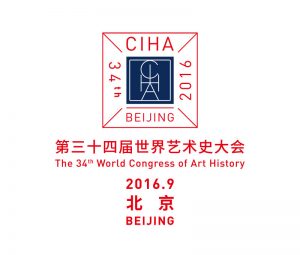 The thirty-fourth World Congress of Art History, organized by the Comité International d’Histoire de l’Art (CIHA), will take place in Beijing, China, from September 15 to 22, 2016. Art and cultural historians from all over the world, and from a vast cross-section of disciplines and fields of professional interest, will discuss the ways of seeing, describing, analyzing, and classifying works of art. As the American affiliate to CIHA, the National Committee for the History of Art (NCHA), a group with strong institutional ties to CAA, is happy to encourage any and all interested art historians to attend.
The thirty-fourth World Congress of Art History, organized by the Comité International d’Histoire de l’Art (CIHA), will take place in Beijing, China, from September 15 to 22, 2016. Art and cultural historians from all over the world, and from a vast cross-section of disciplines and fields of professional interest, will discuss the ways of seeing, describing, analyzing, and classifying works of art. As the American affiliate to CIHA, the National Committee for the History of Art (NCHA), a group with strong institutional ties to CAA, is happy to encourage any and all interested art historians to attend.
The congress’s theme is “Terms.” Topics are divided into twenty-one sections to enable comparisons among different interpretations, definitions, and methods within art history. Each panel will comprise a program reflecting CIHA’s commitment to the idea of diversity, which should allow talks on different genres, epochs, and countries to be brought together. The congress uses the word “Terms” to draw a wide range of case studies.
The theme for the Beijing 2016 is the logical counterpart to the previous rubric, “The Challenge of the Object,” which was addressed at the Nuremberg 2012 CIHA Congress in Germany. In Beijing, it is a matter of questioning the words, the definitions, and the very concepts used to study art by different scientific traditions with this essential question: How can the methodology of our discipline be enriched by being conscious of the diversity of terms and approaches to art?
The 2016 congress will analyze different concepts of art in diverse cultures and strive to achieve three goals. The first one is to respond to the latest development of art history as a global discipline. The second is to explore art through different terms that underline its relationship to respective cultural frameworks, and the disparities between different cultures in various periods throughout history. The third goal is to gain a more comprehensive understanding of art as an essential part of human culture.
CIHA traces its roots back to the 1930s, when it was officially founded at the Brussels Congress. The organization has now vastly exceeded its original Euro-American emphasis and currently has national chapters on every continent. Next month’s meeting will be the organization’s first conference in China. In addition to the international gathering held every four years, CIHA also sponsors specific thematic art-history conferences such as “New Worlds: Frontiers, Inclusion, Utopias” in Rio de Janeiro, Brazil, which took place in August 2015.
In the June 2016 Art Bulletin
posted by Christopher Howard — July 12, 2016
 A grotesquely anthropomorphic hound standing on powerful back legs and blowing a stylized trumpet graces the cover of the June 2016 issue of The Art Bulletin. The etching is one of two dozen similar works by the early seventeenth-century artist Christopher Jamnitzer that Madeleine C. Viljoen explores in relation to early modern cosmography. The June issue also presents the first publication of an extraordinary eleventh-century enamel cup from a nomad’s grave in Ukraine, which Warren T. Woodfin examines in the context of other Middle Byzantine works with secular imagery. In addition, the issue features essays by David Young Kim on the multiple functions served by the carpets in Lorenzo Lotto’s paintings, and by Jean H. Duffy on issues of genre and perception in Jean Dubuffet’s mixed-genre spectacle Coucou Bazar. Shao Yiyang’s “Whither Art History?” essay reflects on the flourishing of art history in contemporary China.
A grotesquely anthropomorphic hound standing on powerful back legs and blowing a stylized trumpet graces the cover of the June 2016 issue of The Art Bulletin. The etching is one of two dozen similar works by the early seventeenth-century artist Christopher Jamnitzer that Madeleine C. Viljoen explores in relation to early modern cosmography. The June issue also presents the first publication of an extraordinary eleventh-century enamel cup from a nomad’s grave in Ukraine, which Warren T. Woodfin examines in the context of other Middle Byzantine works with secular imagery. In addition, the issue features essays by David Young Kim on the multiple functions served by the carpets in Lorenzo Lotto’s paintings, and by Jean H. Duffy on issues of genre and perception in Jean Dubuffet’s mixed-genre spectacle Coucou Bazar. Shao Yiyang’s “Whither Art History?” essay reflects on the flourishing of art history in contemporary China.
The reviews section, with a theme of “Cosmopolitan Art Worlds,” includes six reviews of recent books on art in Renaissance Italy, late nineteenth-century Shanghai, turn-of-the-century Paris, modern India, contemporary Brazil and Japan, and twentieth-century Nigeria.
CAA sends print copies of The Art Bulletin to all institutional members and to those individuals who choose to receive the journal as a benefit of membership. The digital version at Taylor & Francis Online is currently available to all CAA individual members regardless of their subscription choice.
In the next issue of the quarterly journal, to be published in September, essays will consider Kongo visual and cultural practices in contemporary art, twelfth-century Chinese paintings of Buddhist rituals, the nineteenth-century perception of Watteau’s Pierrot character as forlorn, a brush-and-ink painting collectively created in the early People’s Republic of China, and intersections of global politics and imaging in the site-specific art of Walter De Maria. Four reviews will be presented under the rubric “Urban Images, Memories, and Fragments.”
Spring 2016 Recipients of the Millard Meiss Publication Fund
posted by Christopher Howard — June 01, 2016
This spring, CAA awarded grants to the publishers of six books in art history and visual culture through the Millard Meiss Publication Fund. Thanks to the generous bequest of the late Prof. Millard Meiss, CAA gives these grants to support the publication of scholarly books in art history and related fields.
The six Meiss grantees for spring 2016 are:
- Joanna Grabski, Art World City: The Creative Economy of Artists and Urban Life in Dakar, Indiana University Press
- Shelley Drake Hawks, Painting by Candlelight: The Art of Resistance in Mao’s China, University of Washington Press
- Miya Mizuta Lippit, Aesthetic Life: The Artistic Discourse of Beauty in Modern Japan, Harvard University Press
- Leora Maltz-Leca, William Kentridge: Process as Metaphor and Other Doubtful Enterprises, University of California Press
- Heather McPherson, Art and Celebrity in the Age of Reynolds and Siddons, Pennsylvania State University Press
- Amanda Wunder, Sacred Art and Society in Seventeenth-Century Seville, Pennsylvania State University Press
Books eligible for Meiss grants must already be under contract with a publisher and on a subject in the visual arts or art history. Authors and presses must be current CAA members. Please review the application guidelines for more information.


